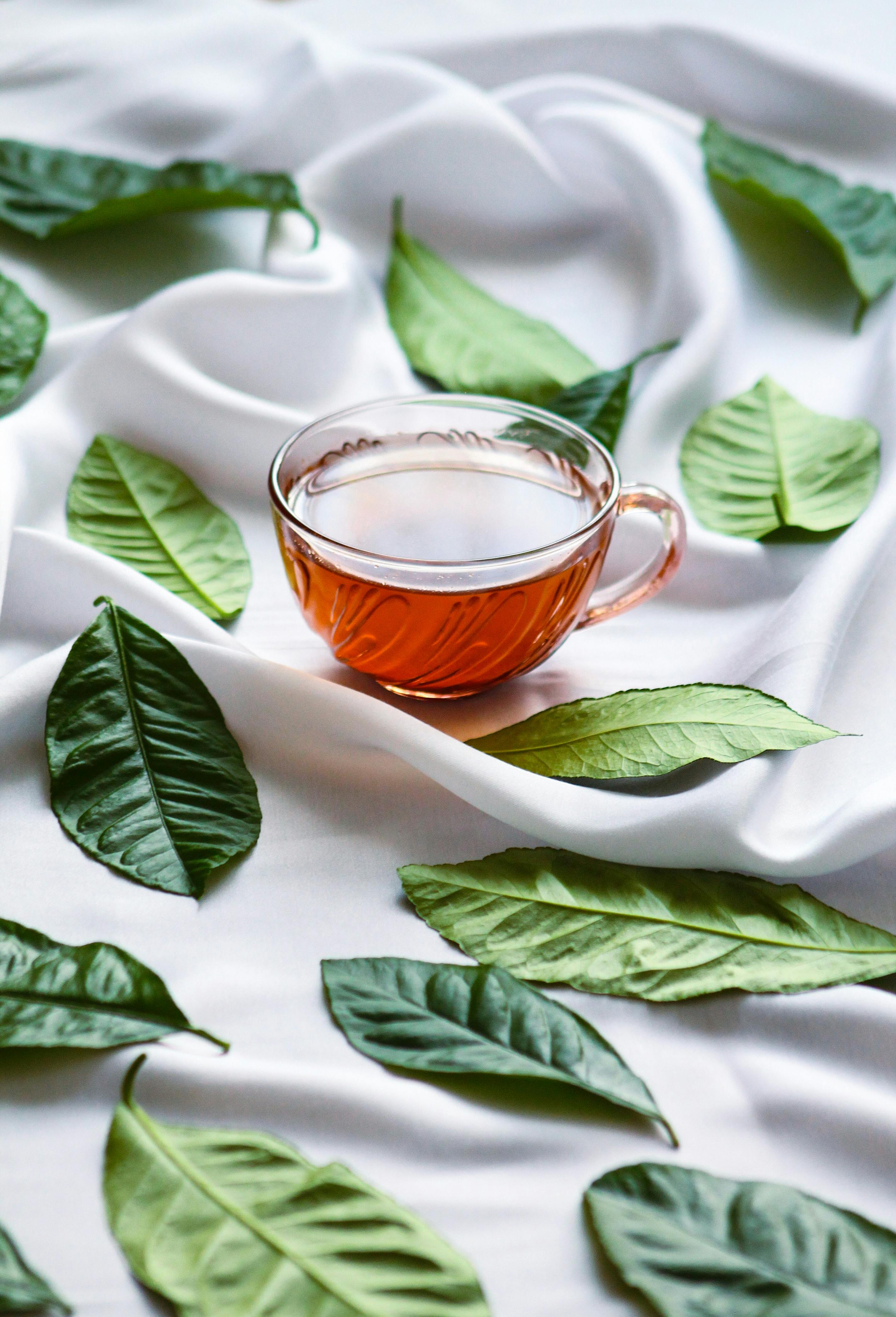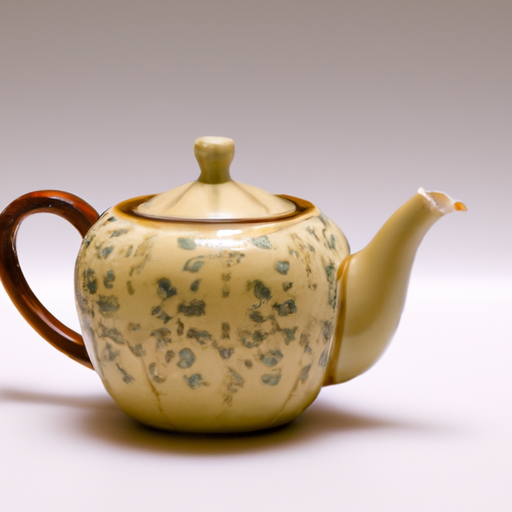Discover the enchanting world of Japanese tea culture, where every sip tells a story steeped in tradition and reverence. From the vibrant green hues of matcha to the refined artistry of tea ceremonies, Japan’s tea culture is a testament to its rich culinary heritage. Join us as we embark on a journey through centuries of tea cultivation, exploring the intricate rituals and customs that have shaped this time-honored tradition. Immerse yourself in the aromatic flavors and serene simplicity of Japanese tea culture, and gain a newfound appreciation for the art of tea.

Overview of Japanese Tea Culture
Japanese tea culture has a long and rich history, deeply intertwined with the country’s traditions and customs. Tea holds a special place in Japanese society, and its significance goes far beyond just a beverage. From ancient rituals and ceremonies to modern tea houses and gardens, Japan’s tea culture is a fascinating and integral part of its national identity.
History of tea in Japan
Tea was first introduced to Japan in the 9th century by Buddhist monks returning from China. Initially used for medicinal purposes, tea gradually gained popularity among the noble class for its calming and spiritual properties. Over time, tea cultivation and consumption spread throughout the country, and various tea traditions and ceremonies began to emerge.
Importance of tea in Japanese culture
Tea holds great importance in Japanese culture, symbolizing harmony, hospitality, and respect. It is a drink that brings people together, a way to express gratitude and connect with others on a deeper level. The art of tea-making and tea-drinking is deeply ingrained in Japanese society, and it is believed to bring peace and serenity to the mind and body.
The different types of Japanese tea
Japan is famous for its wide variety of teas, each with its unique flavor profile and preparation method. Some of the most popular types of Japanese tea include matcha, sencha, gyokuro, and hojicha. Matcha, a finely ground powdered green tea, is the most well-known and widely consumed type of Japanese tea, often associated with tea ceremonies and meditation practices. Sencha is a common everyday green tea, while gyokuro is a premium variety known for its rich flavor. Hojicha, on the other hand, is a roasted green tea with a distinct smoky taste.
The Role of Tea in Japanese Society
Tea plays multiple roles in Japanese society, reflecting the values and traditions of the Japanese people.
Tea as a symbol of hospitality
In Japan, offering a cup of tea to guests is a sign of hospitality and respect. The act of serving tea is considered a way to create a warm and welcoming atmosphere, creating a sense of harmony between the host and the guest. Whether in a traditional tea ceremony or a casual gathering, sharing tea is a gesture of friendship and goodwill.
Tea as a form of meditation and relaxation
Tea has been an integral part of Japanese meditation and relaxation practices for centuries. The process of preparing and consuming tea is seen as a mindful and meditative act, promoting a sense of calm and inner peace. The simplicity and tranquility of the tea ceremony or even just savoring a cup of tea alone can help to relieve stress and rejuvenate the mind.
Tea in social gatherings and ceremonies
Tea is often at the center of social gatherings and ceremonies in Japan. Whether it’s a tea party, a family gathering, or a formal tea ceremony, sharing tea creates a sense of unity and harmony among the participants. The rituals and etiquettes associated with tea drinking bring a sense of order and grace to these occasions, adding depth and meaning to the overall experience.

Matcha: The Soul of Japanese Tea
Matcha holds a special place in Japanese tea culture, revered for its unique taste, vibrant green color, and ceremonial significance.
The origins of matcha
Matcha originated in China and was introduced to Japan by Zen monks in the 12th century. The monks brought back tea plants and the knowledge of cultivating, grinding, and preparing matcha. Over time, matcha became deeply intertwined with Zen Buddhism and became an essential element of the Japanese tea ceremony.
The cultivation and production process of matcha
Matcha is made from shade-grown tea leaves, carefully harvested by hand. The tea bushes are covered for several weeks before harvest, which increases the chlorophyll content and enhances the flavor and vibrant green color of the leaves. After harvesting, the leaves are steamed, dried, and ground into a fine powder using traditional stone mills.
How matcha is prepared and consumed
In a traditional matcha tea ceremony, the host meticulously prepares and serves the matcha tea to the guests. The matcha powder is whisked with hot water until frothy, and then it is served in small bowls called chawan. The guests receive the bowls with both hands as a sign of respect, savoring each sip of the velvety, slightly bitter yet rich and umami-flavored matcha.
The Traditional Japanese Tea Ceremony
The traditional Japanese tea ceremony, also known as “chanoyu” or “sado,” is a highly ritualized and formalized practice that embodies the essence of Japanese tea culture.
History and significance of the tea ceremony
The tea ceremony has its roots in Zen Buddhism and is said to have been popularized by Sen no Rikyu, a 16th-century tea master. The ceremony became a means to express Zen principles—simplicity, harmony, and respect. It is a disciplined practice that serves to bring people together, fostering a sense of appreciation for nature, art, and humanity.
The elements of a traditional tea ceremony
A traditional tea ceremony consists of several elements, each carefully choreographed and symbolic. The ceremony usually takes place in a tea house or a designated tea room, which is specifically designed to create a serene and intimate atmosphere. The main focus is on the preparation and serving of matcha, accompanied by traditional Japanese sweets called “wagashi.” The setting, decorations, utensils, and gestures all contribute to the overall aesthetic and sensory experience of the ceremony.
Etiquette and rituals of the tea ceremony
The tea ceremony is marked by a set of etiquette and rituals that guide the behavior of both the host and the guests. From the way one enters the tea room to the way tea is served and consumed, every action has a specific meaning and purpose. Attention to detail, mindful movements, and a sense of reverence are emphasized throughout the ceremony, creating a profound and memorable experience for all participants.

Tea Houses and Tea Gardens in Japan
Tea houses and tea gardens are essential components of Japanese tea culture, providing spaces for tea ceremonies, leisurely tea-drinking, and immersion in nature.
The architecture and design of Japanese tea houses
Traditional Japanese tea houses, known as “chashitsu” or “sukiya-zukuri,” are built with meticulous attention to detail and harmony with nature. The architecture often incorporates natural materials, such as wood, bamboo, and paper, creating a sense of simplicity and tranquility. The rooms are minimalistic, featuring tatami mats, sliding doors, and alcoves where tea utensils, artworks, and seasonal flowers are displayed.
Famous tea houses in Japan
Japan is home to many renowned tea houses that have become iconic symbols of Japanese tea culture. One such example is the historic Katsura Imperial Villa in Kyoto, famous for its stunning tea houses set amidst beautiful gardens. Another notable tea house is the Tai-An tea house in Kyoto’s Myōshin-ji temple complex, renowned for its rustic and charming design.
The beauty of Japanese tea gardens
Japanese tea gardens, known as “roji,” are designed to create a seamless transition from the ordinary world to the sacred space of the tea house. These gardens often feature winding stone paths, carefully placed lanterns, moss-covered stones, and serene water features. They are designed to evoke a sense of peace, harmony, and contemplation, allowing visitors to fully immerse themselves in the beauty of nature.
Japanese Tea Sets and Utensils
Japanese tea sets and utensils are not only functional but also works of art, reflecting the elegance and craftsmanship of Japanese culture.
The artistry behind Japanese tea sets
Japanese tea sets are meticulously crafted, with intricate designs and attention to detail. They are often made from delicate porcelain, rustic stoneware, or traditional lacquerware. Each tea set reflects a specific aesthetic, such as the understated simplicity of the wabi-sabi philosophy or the vibrant colors and patterns of traditional Japanese art.
The different types of tea utensils
A Japanese tea set typically includes various utensils, each serving a specific purpose in the tea ceremony. These may include a tea caddy for storing the tea, a tea scoop for measuring the tea powder, a tea whisk for frothing the matcha, and a tea bowl for serving the prepared tea. Each utensil is crafted with precision and care, ensuring the best possible tea-drinking experience.
Traditional and modern tea sets
While traditional tea sets and utensils hold a special place in Japanese tea culture, modern adaptations have also emerged. Contemporary tea sets often combine traditional craftsmanship with modern design elements, resulting in sleek and functional pieces that cater to different tastes and preferences. These modern tea sets help to keep the tea culture vibrant and accessible to a wider audience.
Health Benefits of Japanese Tea
Japanese tea is not only a cultural symbol but also offers numerous health benefits, contributing to overall well-being.
The antioxidant properties of Japanese tea
Japanese teas, especially green teas like matcha, sencha, and gyokuro, are rich in antioxidants, particularly catechins. These potent antioxidants help protect the body against damage from free radicals, supporting a healthy immune system and reducing the risk of chronic diseases.
The role of tea in promoting overall well-being
Tea consumption has long been associated with various health benefits, including improved digestion, enhanced cognitive function, and increased metabolism. Japanese teas, in particular, are known for their calming effect, promoting relaxation and reducing stress levels. The ritual of tea drinking itself can be a form of self-care, allowing individuals to take a break from their busy lives and focus on the present moment.
Specific health benefits of different types of Japanese tea
Different types of Japanese tea offer specific health benefits. Matcha, for instance, provides an energy boost and mental clarity while promoting a sense of calm. Sencha and gyokuro are known for their high antioxidant content and potential cardiovascular benefits. Hojicha, with its lower caffeine content and soothing aroma, is often enjoyed in the evening for relaxation and better sleep.
Tea in Japanese Cuisine
Japanese cuisine and tea culture go hand in hand, with tea playing a crucial role in both savory and sweet dishes.
Tea-infused dishes and desserts
Tea is often used as an ingredient in Japanese sweets and desserts, adding a distinct flavor and aroma. Matcha is a popular choice for tea-infused treats like matcha ice cream, mochi, and wagashi. Sencha and hojicha are also incorporated into various desserts, such as sencha jelly and hojicha-flavored chiffon cakes. The unique taste of tea adds depth and complexity to these culinary creations.
Tea as a flavor enhancer in savory dishes
Tea is not limited to sweet dishes in Japanese cuisine; it is also used as a flavor enhancer in savory dishes. Tea leaves, especially sencha and matcha, can be used as a seasoning for rice, noodles, and salads, enhancing their flavor and giving them a unique twist. Tea-smoked ingredients, such as tea-smoked fish or tea-smoked duck, infuse dishes with a subtle smokiness and fragrance.
Tea pairing with Japanese cuisine
Tea has a natural affinity for Japanese cuisine, complementing and balancing the flavors of various dishes. Lighter teas like sencha and gyokuro pair well with delicate sashimi, sushi, and steamed vegetables, enhancing their natural flavors. Stronger teas like hojicha can be paired with heartier dishes like grilled meats or deep-fried foods, providing a refreshing contrast.
Tea Tourism in Japan
Tea tourism has become increasingly popular in Japan, offering visitors a chance to explore tea-growing regions, participate in tea-themed tours, and experience traditional tea-related events.
Visiting tea-growing regions in Japan
Tea-growing regions, such as Uji in Kyoto, Shizuoka, and Sayama in Saitama, attract tea enthusiasts from around the world. These regions boast picturesque landscapes of tea fields, scenic views, and unique tea-related experiences. Visitors can immerse themselves in the tea cultivation process, learn about the history and traditions of tea production, and even try their hand at harvesting tea leaves.
Tea-themed tours and experiences
Tea-themed tours are a popular way to delve deeper into Japanese tea culture. These tours often include visits to tea factories, tea houses, and tea gardens, providing insights into the production process and the art of tea preparation. Participants have the opportunity to taste different teas, learn about their unique characteristics, and even attend tea ceremonies or workshops conducted by tea masters.
Tea festivals and events in Japan
Japan hosts numerous tea-related festivals and events throughout the year, celebrating the country’s rich tea culture. One such event is the Uji Tea Festival in Kyoto, where visitors can enjoy tea tastings, tea ceremonies, and traditional performances. Other notable festivals include the Shizuoka World Tea Festival and the Tokyo Grand Tea Ceremony. These events offer a vibrant and immersive experience, allowing visitors to fully appreciate the beauty and significance of Japanese tea culture.
Preserving and Promoting Japanese Tea Culture
Efforts are underway to preserve and promote Japanese tea culture, ensuring its longevity and sharing its beauty with the world.
Efforts to preserve traditional tea practices
Organizations, tea schools, and tea masters in Japan are actively involved in preserving and passing down the traditions and techniques of Japanese tea culture. They strive to maintain the authenticity and integrity of tea ceremonies, tea production, and tea-related arts. By providing education, training, and platforms for tea enthusiasts, these efforts ensure that the essence of Japanese tea culture remains alive and thriving.
Promoting Japanese tea culture globally
Japanese tea culture is gaining popularity on the international stage, thanks to the efforts of tea experts, enthusiasts, and organizations. Japanese tea ceremonies, tea tastings, and tea-related workshops are increasingly being offered in different countries, allowing people from diverse backgrounds to experience and appreciate the beauty and tranquility of Japanese tea culture. The distinct flavors and health benefits of Japanese tea are also becoming more widely known and appreciated.
The future of Japanese tea culture
Japanese tea culture continues to evolve while staying firmly rooted in its traditions. As society changes, new generations of tea enthusiasts are finding creative and innovative ways to reinterpret and sustain Japanese tea culture. Whether through technological advancements, modern tea establishments, or global collaborations, the future of Japanese tea culture looks promising, as it continues to captivate and inspire people around the world.
In conclusion, Japanese tea culture is a fascinating and integral part of Japan’s heritage and identity. From its historical roots and ceremonial practices to the artistry of tea sets and the health benefits of tea consumption, Japanese tea embodies harmony, respect, and mindfulness. As efforts to preserve and promote Japanese tea culture gain momentum, its timeless beauty and significance will continue to captivate tea lovers and enthusiasts worldwide.

